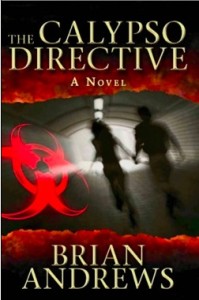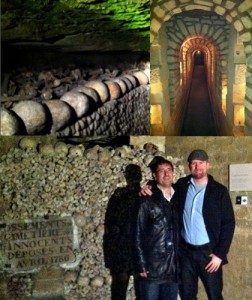From the ITW Debut Author class of 2012-2013, TKZ welcomes Brian Andrews as our guest blogger, here to discuss one of my favorite topics, researching location. Enjoy.
 Everyone has heard the old real estate adage, "What are the three most important factors to consider when buying property? LOCATION, LOCATION, LOCATION. As a thriller writer, I spend a great deal of time mulling over location… scene location to be precise. Why? Because selecting a scene location is like deciding whether to bake brownies using oil, or substituting applesauce instead. Sure, the applesauce brownies are low fat, but they lose that authenticity that makes a brownie taste like a brownie. Wikipedia is applesauce. The queasy, weak in the knees sensation I felt leaning against the metal railing on the Key Bridge, as I imagined what it would be like to jump into the grey-green water of the Potomac River flowing eighty feet below… that’s baking brownies with oil.
Everyone has heard the old real estate adage, "What are the three most important factors to consider when buying property? LOCATION, LOCATION, LOCATION. As a thriller writer, I spend a great deal of time mulling over location… scene location to be precise. Why? Because selecting a scene location is like deciding whether to bake brownies using oil, or substituting applesauce instead. Sure, the applesauce brownies are low fat, but they lose that authenticity that makes a brownie taste like a brownie. Wikipedia is applesauce. The queasy, weak in the knees sensation I felt leaning against the metal railing on the Key Bridge, as I imagined what it would be like to jump into the grey-green water of the Potomac River flowing eighty feet below… that’s baking brownies with oil.
When I travel for my "day job", I’m always scoping out locations for future scenes in future novels. My motto has become: Don’t force a location into the story, take the story to the location. Recently, I had a business meeting in Paris, which afforded me one free morning to play tourist. When my Parisian host asked me what I would like to do, I replied, "Take me to the creepiest place imaginable." And so he did. The Catacombs beneath Paris hold the remains of over six million Parisians. The walkways are lined with bones. Femurs and skulls are stacked 2 meters high and used to decorate this dank and disturbing underground labyrinth. It was described to me as "romantic macabre." No arguments there. When I finally stepped out of the Catacombs and back into the warm Parisian sun, I knew with certainty that characters of mine will someday find themselves in this location.
What is your favorite scene location in a novel, or in real life?
 Midwest born and raised, Brian is a US Navy Veteran who served as an officer aboard a 688 class nuclear submarine in the Pacific. Brian lives in Tornado Alley with is wife and daughter. His debut thriller, THE CALYPSO DIRECTIVE, was recently released. Brian is a member of the ITW debut author class of 2012/2013 and lifelong fan of the thriller genre.
Midwest born and raised, Brian is a US Navy Veteran who served as an officer aboard a 688 class nuclear submarine in the Pacific. Brian lives in Tornado Alley with is wife and daughter. His debut thriller, THE CALYPSO DIRECTIVE, was recently released. Brian is a member of the ITW debut author class of 2012/2013 and lifelong fan of the thriller genre.
Say hello to Brian on Facebook at: www.brianandrewsauthor.com/facebook


